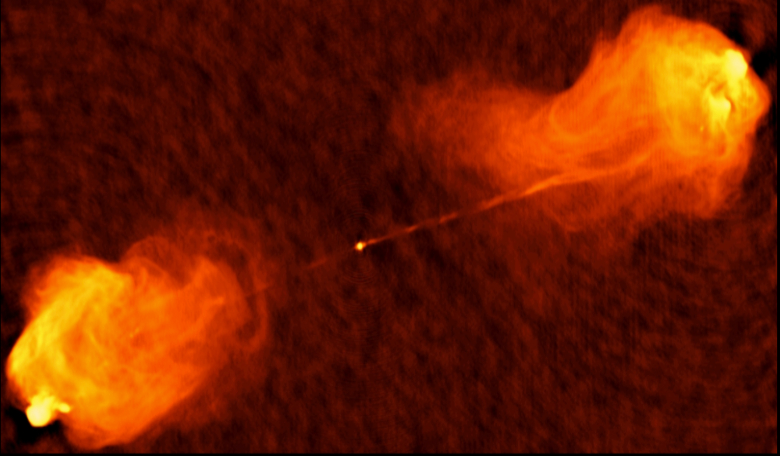A type of radio source, known as a DRAGN, thought to be hosted exclusively by elliptical galaxies has been tentatively found lurking in a spiral galaxy. This newly sourced spiral DRAGN is one of only six now currently known to researchers.
DRAGNs are Double-lobed Radio sources Associated with Galactic Nuclei, a term coined by Patrick Leahy in 1993 and according to standard galaxy formation models, these beasts are predicted to only be found by galaxies that have undergone a merger – elliptical galaxies – the same process that also triggers the formation of a DRAGN. Indeed, until recently, observations of DRAGNs in the local Universe have confirmed this to be the case.
However in recent years, a handful of DRAGNs have been found in spiral galaxies and this is somewhat puzzling for those studying galaxy evolution. Spiral galaxies cannot undergo a major merger without evolving into another structure, and because elliptical galaxies contain older stars and less gas, researchers think that these objects represent galaxies nearing the end of their lives. As such a morphological transition from spiral to elliptical is thought to be a one-way process, at least in the local Universe.
Although, around 77 percent of the observed galaxies in the Universe are spiral galaxies, as they are more easily detected than their elliptical counterparts, to date the existence of only 5 spiral DRAGNs are widely accepted by researchers. Now astronomers based at Manchester, UK and at Nagoya, Japan are hoping to bump that number up to six with the serendipitous discovery of a DRAGN found in MCG+07-47-10, a face-on late-type Sbc galaxy with distinctive spiral arms and prominent bulge suggesting a high black hole mass.
This DRAGN, found with the Giant Meterwave Radio Telescope, however has a comparatively low radio luminosity and is two orders of magnitude smaller than other known spiral DRAGNs. The team, whose lead author on the research paper is David Mulcahy from Jodrell Bank Centre for Astrophysics, Manchester have therefore suggested that that may indicate the existence of a previously unknown low-luminosity population of spiral DRAGNS.
What role spiral DRAGNs play in standard galaxy formation theories, is still a matter of debate but the team have offered the suggestion that DRAGNS “may represent a rare phenomenon of elliptical galaxies transitioning back into spirals through accretion of gas and stars, perhaps from a companion.” Mulcahy and colleagues conclude that with such limited numbers, more studies on spiral DRAGNs are needed to ascertain whether these objects are a result of their environment, of non-standard physical properties, or perhaps a combination of their nature and nurture.
For more information on this research, see: http://arxiv.org/pdf/1609.04820.pdf











